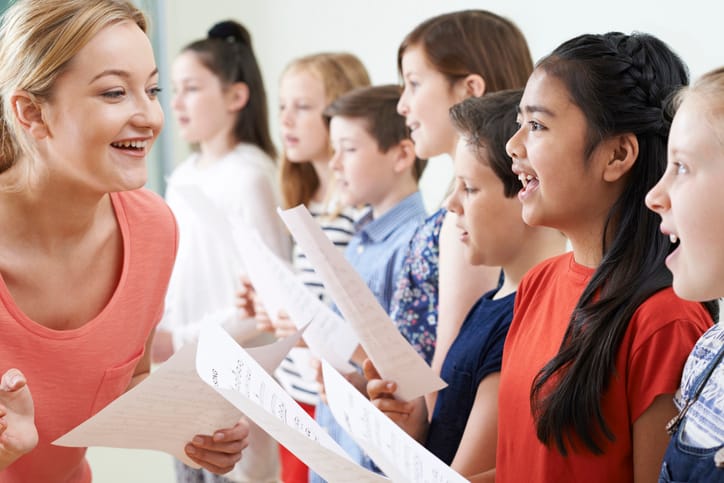The Model Music Curriculum: What You Need To Know
Written by Kapow Primary
Published on 23rd April 2021
Last Updated: 17th July 2024
Written by Kapow Primary
Published on 23rd April 2021
Last Updated: 17th July 2024

The Model Music curriculum is a non-statutory guidance document published by the DfE on Friday 26th March 2021, after two years of development by the Associated Board of the Royal Schools of Music (ABRSM) and a panel of advisors. It does not replace the current national curriculum and there is no requirement for schools to adopt it. Instead, it demonstrates one possible approach to the current national curriculum for Music, giving details of what could be taught in primary school music lessons in order to progress logically towards the end of key stage expectations.
The most significant aspect of this document is that it sets out minimum teaching time requirements for music. Although, like the rest of the document, these are non-statutory, schools may find these hard to ignore, particularly in the light of Ofsted’s focus on ‘broad and balanced’ curriculum. The suggested allocation for KS1 and KS2 is an hour a week, which can be broken down into smaller units of time if necessary.
The model curriculum also unites the national curriculum and the National Plan for Music Education for the first time, in its suggestion that children in Year 3 or 4 should be offered whole-class instrumental teaching programmes as part of a school’s overall approach to the Music curriculum. The guidance suggests that these should take place in addition to the curriculum Music lesson, which does reflect the original intent of these programmes when they launched as Wider Opportunities in 2007. However, experience since 2007 has shown that very few schools have ever been able to dedicate two lessons a week to Music, so the reiteration of this expectation in the model curriculum is unlikely to change things significantly in this regard.
The guidance contains suggestions for pieces to listen to from classical to popular and ‘world’ music traditions, and for repertoire to sing and play. These repertoire and listening lists represent a starting point for schools, but are intended to be supplemented with teachers’ own repertoire choices. There have already been concerns raised around the colonial nature of some of the musical choices, and of how musical cultures, countries, and continents are mislabelled within the document, which is unfortunate given recent high-profile campaigns to decolonise the curriculum. However, it is encouraging to see some female composers on the repertoire list, alongside composers and musicians of colour – even within the traditionally white male preserve of classical music.
The Model Music Curriculum also contains lists of suggested vocabulary and musical signs and symbols from staff notation for each year group to learn. For schools adopting a knowledge-rich approach, these could be of value in the creation of knowledge organisers and other curriculum progression documents, but again these are not compulsory to adopt. It is worth noting that for the model curriculum, notation work starts in KS1, rather than in KS2.
Perhaps the main thing to note about the Model Music curriculum is that it is not a teaching resource. It will still require teachers to create or source their own lesson plans and teaching materials. For this reason, Kapow Primary is currently reviewing its scheme of work and will map its resources to the model curriculum. If necessary, new resources will be created or amended so you can relax knowing that Kapow Primary is doing the planning for you and meets the new guidelines.